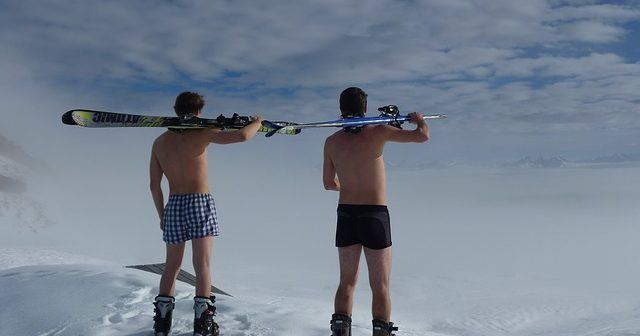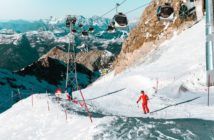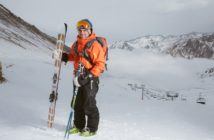There are loads of people out there, who grow up under the sun and barely see more than morning frost in winter, that dream of heading out for a ski trip. Hitting the slopes of the bigger mountains are even on a fair few bucket lists!
Of course, having little experience with such cold climates can leave some a bit flummoxed when it comes to packing their bags. Bundling up in half of your winter wardrobe is always an option.
Waddling around in all that clothing is hardly going to be comfortable though. So, if you are wondering what to pack for a ski trip, look no further than this handy guide!
There are a few items you can pop onto your shopping list that will improve the experience, and others that will keep you super comfy without causing you to become all sweaty and overheated.
Contents
What to Wear Skiing to Stay Warm
Keeping out the cold is vital on ski trips. There are three key layers of clothing that, when combined, will keep even the most temperature-sensitive of people cozy and safe.
Plus, if you’re wondering what to wear cross country skiing, this is it!
Thermal Under-layer
A thermal under-layer is the first and last defence against the cold. Proper thermal gear is form-fitting, retains heat, and wicks moisture away from the skin.
And no, you can’t just pick out a pair of cotton knickers. Cotton absorbs moisture and takes a long time to dry, making it impractical for ski trips.
Merino wool or synthetic wool are the best materials for synthetic under-layers, as they wick sweat away from your skin and prevent a good deal of heat from escaping.
Ladies, a thermal sports bra will be your best friend on any ski trip! Not just for when you decide to go skiing also; they are great for just being in the cold, as they’ll keep you warm and pull the sweat away from your skin without becoming uncomfortable.
Insulated Layer
The answer to the question ‘what to wear under ski pants’ is typically either a flannel or down layer of clothing.
This material acts kind of like the insulation stuffed inside the walls of your house, keeping the cold out and the heat in. Lots of shell layers, which we’ll talk about in a moment, actually come with an insulated layer built in.
It is vital that you double-check, though, as you really don’t want to get caught out in the cold without insulation. The results will be… frosty, to say the least.
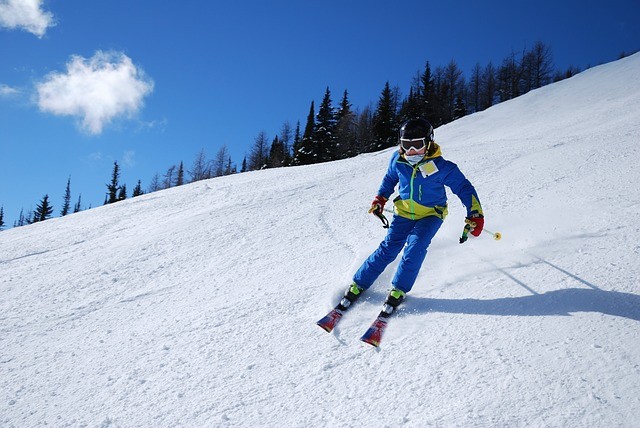
Shell Layer
Some might argue that the shell layer, the outermost layer, is the most important. In truth, the shell layer is useless without the insulated layer and vice versa.
The shell keeps snow and liquid out and prevents the cold winds from stealing all the heat your insulation has trapped.
A proper shell layer for ski trips must be waterproof and windproof, and you’ll need shell layers for both your pants and jacket.
Ski Wear Accessories
If you are really struggling to think of what to wear for skiing holidays, then this list will cover the most basic attire.
What to wear skiing, aside from the big three layers above, are ski socks, ski helmets, ski goggles, balaclavas, and mittens.
These will keep your skin protected from the chill, frost burn, and sunburn – yes, you can get sunburnt! It comes from the glare of the sun reflected by the snow.
Socks
If you aren’t an athlete, then most of the socks in your dresser are likely a cotton blend. Unfortunately, when it comes to skiing, cotton socks are pretty much useless.
They’ll absorb your sweat and stay wet all day, making you super uncomfortable and probably rubbing your feet raw too.
Investing in a few pairs of ski socks is a great idea! Plus, they’ll be handy for cold mornings come winter too!
Snow Shoes
Now, you can’t just throw on a pair of sneakers and hope for the best when it comes to snow.
Unless the fluff is under an inch thick, you’ll find yourself struggling to move more than a few feet before falling over – and sneakers offer very little in the way of protection against snow, ice, and moisture.
Snow shoes are specially designed for handling snow. They distribute your weight, keep you warm and dry, and protect your ankles from rolling.
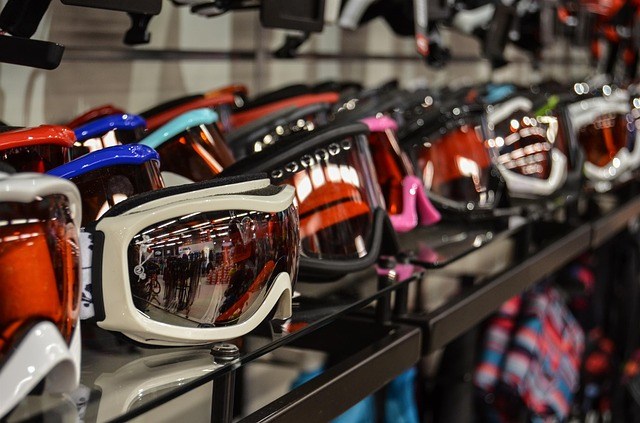
Helmets and Goggles
Even if you are just going cross-country skiing, or making a quick hike from your cabin to the main ski resort, you’ll probably want to wear a helmet and goggles.
Aside from keeping you warm, helmets protect your ears better than a pair of earmuffs, while the goggles stop sun glare and flecks of sleet from getting in your eyes.
Mittens or Gloves
Keep your fingers safe from frostbite and throw a quality pair of mittens in your suitcase.
Mittens for ski trips should be waterproof and insulated, especially if you are going to be out in the elements for more than an hour.
Balaclavas
No, not the delicious Turkish pastry, “baklava.” A balaclava is kind of like a form-fitting scarf, one that completely covers your neck and chin, preventing windburn, sunburn, and exposure.
Here’s a video showing you more details on what to wear skiing.
Après Ski
Finally, the Après ski outfits! If you’ve been researching ski resorts and saw the term Après ski pop up, but are a tad flummoxed, don’t worry!
Après ski is just a term for the parts of ski trips without the skiing, like going out for dinner, partying, or catching up at the bar.
Interested in Après ski, but not sure what to wear? Pick out your fav’ outfits for a night in colder weather, and maybe a swimsuit – hot tubs are super popular on ski trips – and you’re golden!
Packing for a ski trip may seem to confound, but just follow this guide and you’ll be ready to hit the snow in no time at all!
Do you have any tips on what to wear skiing?

